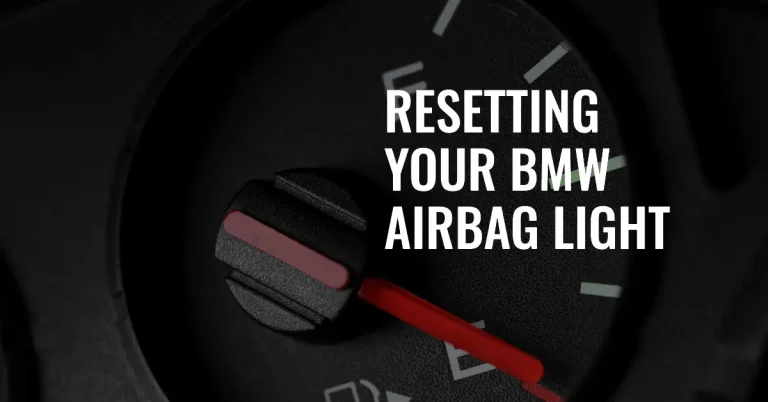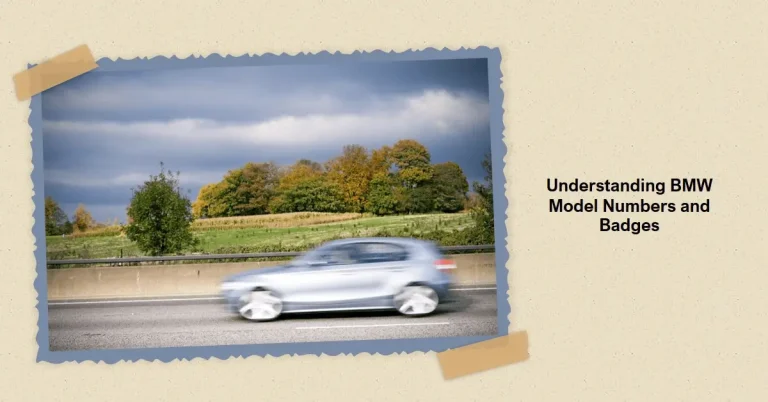What is DTC BMW? A Clear Explanation of BMW’s Dynamic Traction Control System
Dynamic Traction Control (DTC) is a safety feature in many BMW cars that helps to prevent accidents by providing better control of the vehicle. When the DTC BMW warning light button is pressed, the acronym “DTC” appears on the dashboard, activating the traction control. The system is particularly useful on slippery or snowy roads, allowing the wheels to slightly spin for better traction.
DTC is a part of the BMW’s Dynamic Stability Control system, which works by detecting a loss of traction and automatically beginning stabilization measures. This curbs engine output and minimizes wheel slip, helping the driver to maintain control of the vehicle. The DTC system is designed to prevent drifting and keep the car from spinning out or sliding on slippery roads.
In this article, we will explore what DTC is, how it works, and why it is an important safety feature in BMW cars. We will also discuss how to turn DTC on and off and provide some tips for using the system effectively. Whether you are a new BMW owner or a seasoned driver, this article will provide you with the information you need to understand and use DTC to its full potential.
What is DTC in BMW?
Dynamic Traction Control (DTC) is a safety feature that is available in many BMW cars. This feature allows the driver to maintain full control of the car and avoid accidents by providing better traction. DTC is designed to prevent the wheels from spinning on slippery surfaces, which can cause the car to lose control and skid.
When the DTC button is pressed, the acronym “DTC” appears on the dashboard to activate the traction control system. The system detects a loss of traction and automatically begins stabilization measures, curbing engine output and minimizing wheel slip. This is particularly useful on snowy or slick roads, which allows the wheels to slightly spin for better traction.
DTC is an acronym for Dynamic Traction Control, and it’s a button in BMW cars that allows traction control. If the car senses that it’s in a slip or skid, then it will apply brakes to the appropriate wheel. In such a way, it will correct the skid and straighten the car out.
In summary, DTC is a safety feature that is designed to prevent the wheels from spinning on slippery surfaces, which can cause the car to lose control and skid. It allows the driver to maintain full control of the car and avoid accidents by providing better traction.
Understanding DTC System
Dynamic Traction Control (DTC) is an electronic system designed to regulate traction and stability in different road conditions. The DTC system plays a crucial role in ensuring optimal performance and safety when driving a BMW car by adjusting the power delivery and braking force based on the available grip levels.
The DTC system is a safety feature in many BMW cars and other cars in the same category. When the DTC BMW warning light button is pressed for a few seconds, the acronym “DTC” appears on the dashboard to activate traction control. Good traction gives the driver full control of the car to avoid accidents.
The DTC system monitors wheel speed and applies brakes to the wheels to help keep the driver in control of the vehicle. It works by analyzing the wheel speed, which is an indicator of traction. If the system detects a loss of traction, DTC automatically begins stabilization measures, curbing engine output and minimizing wheel slip. This system is particularly useful on snowy or slick roads, which allows the wheels to slightly spin for better traction.
The DTC system is part of the Dynamic Stability Control (DSC) system, which includes other safety features such as the Anti-lock Braking System (ABS), Electronic Brake-force Distribution (EBD), and Dynamic Brake Control (DBC). The DSC system works together with the DTC system to provide optimal stability and control in different driving conditions.
In summary, the DTC system is an essential safety feature in BMW cars that helps to regulate traction and stability in different road conditions. It works by monitoring wheel speed and adjusting power delivery and braking force based on the available grip levels. The DTC system is part of the DSC system, which includes other safety features such as ABS, EBD, and DBC to provide optimal stability and control in different driving conditions.
Features of DTC
Dynamic Traction Control (DTC) is a safety feature in many BMW cars that enhances vehicle stability and traction on the road. Here are some of the features of DTC:
- Loss of Traction Detection: DTC automatically detects a loss of traction and begins stabilization measures to curb engine output and minimize wheel slip. This is especially useful on snowy or slick roads, allowing wheels to slightly spin for better traction.
- Sports-Style Driving Dynamics: DTC enables sports-style driving dynamics by controlling stability when wheel traction is higher. It allows the driver to have more control over the vehicle’s handling and performance in challenging driving conditions.
- Traction Control On/Off: The DTC button and feature can be turned on and off by the driver. When turned on, the DTC system is active, and when turned off, the DTC system is inactive.
- Enhanced Performance: DTC not only enhances vehicle stability and traction but also improves overall performance by allowing for more controlled acceleration and cornering.
Overall, DTC is a valuable safety feature that provides drivers with more control over their vehicle in challenging driving conditions.
How DTC Works?
Dynamic Traction Control (DTC) is a safety mechanism that is part of the Dynamic Stability Control system in BMW vehicles. Its primary function is to control the stability and traction of a vehicle, allowing for sports-style driving dynamics. DTC makes it easier for drivers to control drift and make tighter turns whenever necessary.
When a loss of traction is detected, DTC automatically begins stabilization measures, curbing engine output and minimizing wheel slip. This system is particularly useful on snowy or slick roads, allowing the wheels to slightly spin for better traction. The DTC button allows traction control to be turned on and off by the driver.
DTC works by using sensors to detect when the vehicle is losing traction. It then adjusts the engine output and braking force to prevent wheel slip and maintain control. The system is designed to work in conjunction with other safety features, such as ABS and electronic stability control (ESC), to provide maximum control and stability.
DTC is especially useful in situations where the driver needs to make sudden maneuvers or navigate challenging road conditions. It allows for more precise control of the vehicle, even in adverse weather or road conditions. Overall, DTC is an important safety feature that helps drivers maintain control and stay safe on the road.
Advantages of DTC
Dynamic Traction Control (DTC) is a useful feature in BMW vehicles that offers several advantages to drivers. Here are some of the benefits of using DTC:
1. Improved Traction
DTC helps improve traction by allowing the wheels to slightly spin when the system detects a loss of traction. This feature is particularly useful on snowy or slick roads, where it can prevent the wheels from locking up and provide better grip on the road. By minimizing wheel slip, DTC helps drivers maintain control of their vehicle in challenging driving conditions.
2. Enhanced Stability
DTC also helps enhance stability by automatically beginning stabilization measures when it detects a loss of traction. This can include curbing engine output and minimizing wheel slip to help the driver maintain control of the vehicle. By providing stability in challenging driving conditions, DTC can help prevent accidents and keep drivers safe on the road.
3. More Dynamic Driving
Another advantage of DTC is that it makes driving on snow and ice more dynamic. Once activated, it gives sporty drivers more room to maneuver around curves. In a way, it’s a much better function since it even permits controlled drifts. Of course, the driver keeps complete control over the vehicle in all situations.
4. Better Fuel Efficiency
DTC can also help improve fuel efficiency by minimizing wheel slip and reducing engine output when it detects a loss of traction. By using less fuel, drivers can save money on gas and reduce their carbon footprint.
Overall, DTC is a valuable feature in BMW vehicles that offers several advantages to drivers. By improving traction, enhancing stability, providing more dynamic driving, and improving fuel efficiency, DTC can help drivers stay safe and save money on gas.
Disadvantages of DTC
While Dynamic Traction Control (DTC) is a useful feature in BMW cars, it also has some disadvantages that drivers should be aware of.
One of the main disadvantages of DTC is that it can be dangerous in certain situations. When driving on a slippery surface, DTC may allow the wheels to spin too much, causing the car to lose control. Additionally, if the driver is not experienced in using DTC, they may not know how to properly control the vehicle in these situations.
Another disadvantage of DTC is that it can reduce fuel efficiency. When the wheels are allowed to spin more, the engine has to work harder to maintain speed, which can increase fuel consumption.
Furthermore, DTC may not be effective in all situations. For example, if the car is stuck in deep snow or mud, DTC may not be able to provide enough traction to get the car moving again.
Overall, while DTC is a useful feature in BMW cars, it is important for drivers to be aware of its limitations and to use it appropriately in different driving conditions.
DTC and BMW Models
Dynamic Traction Control (DTC) is a feature present in all 2020, 2021, and 2022 BMW models with the xDrive system, which is a higher version of an all-wheel-drive system. DTC is an electronic system designed to regulate traction and stability in different road conditions.
On the latest models of BMW cars, the DTC mode is off by default and must be activated manually. When activated, DTC allows the wheels to spin slightly for better traction, which is particularly useful on snowy or slick roads.
DTC is closely related to the BMW’s stability control system, which is designed to prevent the car from skidding or sliding out of control. When the DTC system detects a loss of traction, it automatically begins stabilization measures, curbing engine output and minimizing wheel slip. This helps to keep the car stable and on course.
The DTC system also plays a crucial role in ensuring optimal performance and safety when driving a BMW car. It adjusts the power delivery and braking force based on the available grip levels, which allows the driver to maintain control of the car in different driving conditions.
Overall, DTC is an important feature that helps to improve the driving experience and safety of BMW cars. It allows drivers to maintain control of their cars in different road conditions, and ensures that the car performs optimally in all situations.
Troubleshooting DTC Issues
If you are experiencing issues with the DTC system in your BMW, there are a few troubleshooting steps you can take to diagnose and potentially fix the problem. Here are some common issues and solutions:
DTC Warning Light Stays On
If the DTC warning light stays on even when driving on dry, flat roads, there may be an issue with the system. Here are some potential causes and solutions:
- Faulty wheel speed sensors: The DTC system relies on wheel speed sensors to detect slipping and adjust power delivery accordingly. If one or more of these sensors is faulty, the system may not work correctly. Replace the faulty sensor(s) to fix the issue.
- Damaged wiring: The wiring that connects the wheel speed sensors to the DTC system can become damaged over time, leading to incorrect readings and a malfunctioning system. Inspect the wiring and repair or replace any damaged sections.
- Failed DTC control module: If all other potential causes have been ruled out, the DTC control module itself may be faulty. Replace the module to fix the issue.
DTC Warning Light Does Not Turn On
If the DTC warning light does not turn on when driving on slippery roads, there may be an issue with the system. Here are some potential causes and solutions:
- Disabled DTC system: It is possible to manually disable the DTC system by pressing and holding the DTC button on the dashboard. Make sure the system is enabled by pressing the button again and checking that the warning light turns on.
- Failed DTC control module: If the DTC system is enabled but the warning light still does not turn on, the control module may be faulty. Replace the module to fix the issue.
- Damaged wiring: As mentioned above, damaged wiring can cause issues with the DTC system. Inspect the wiring and repair or replace any damaged sections.
By following these troubleshooting steps, you can potentially diagnose and fix issues with the DTC system in your BMW. If the issue persists, it may be necessary to take the car to a professional mechanic for further diagnosis and repair.
Conclusion
In conclusion, Dynamic Traction Control (DTC) is an essential safety feature in many BMW cars that helps to keep the vehicle stable and provide better traction on the road. The DTC warning light button, when pressed for a few seconds, activates the DTC system, and the acronym “DTC” appears on the dashboard.
DTC is a variant of the traditional Traction Control System (TCS) found in many vehicles. It allows the driver to have more control over the vehicle’s handling and performance in challenging driving conditions. When the DTC is enabled, it partially disables the TCS, allowing for some wheel spin and better acceleration on slippery roads.
The DTC system is designed to work in conjunction with other safety features in the car, such as the Dynamic Stability Control (DSC), to provide the driver with maximum control and safety on the road. When the DTC is fully disabled, the TCS and DSC are also disabled, and the driver is solely responsible for maintaining control of the vehicle.
Overall, DTC is an essential safety feature that can help prevent accidents and provide better control and stability on the road. It is recommended that drivers familiarize themselves with the DTC system and use it appropriately to ensure maximum safety while driving their BMW.







